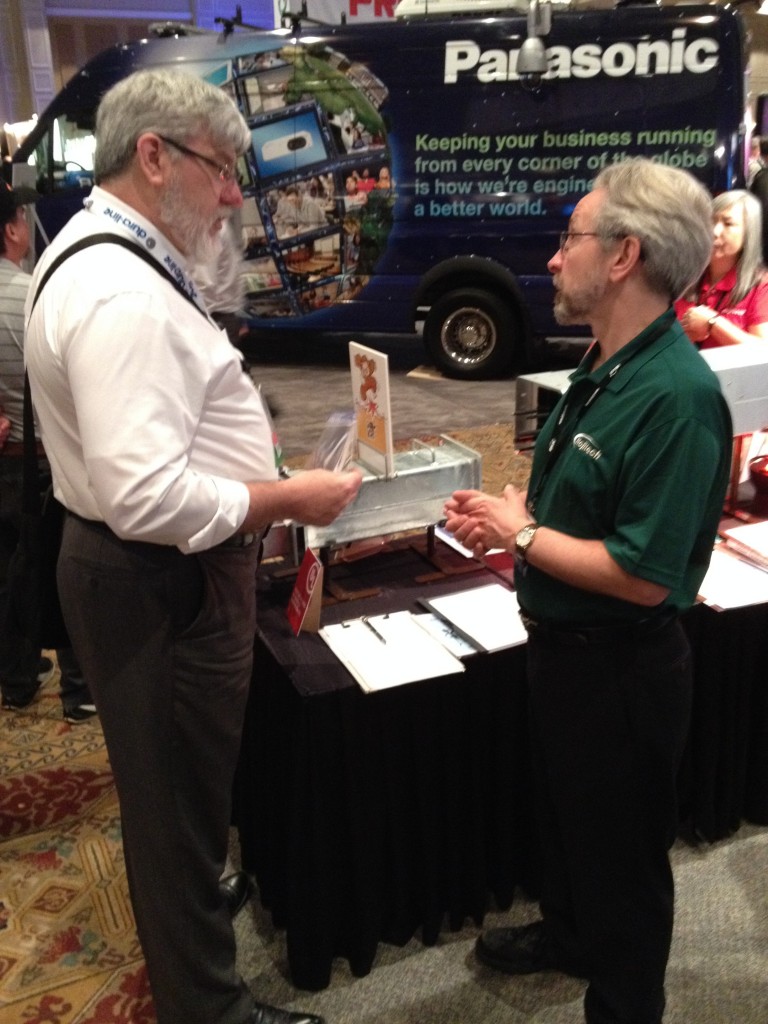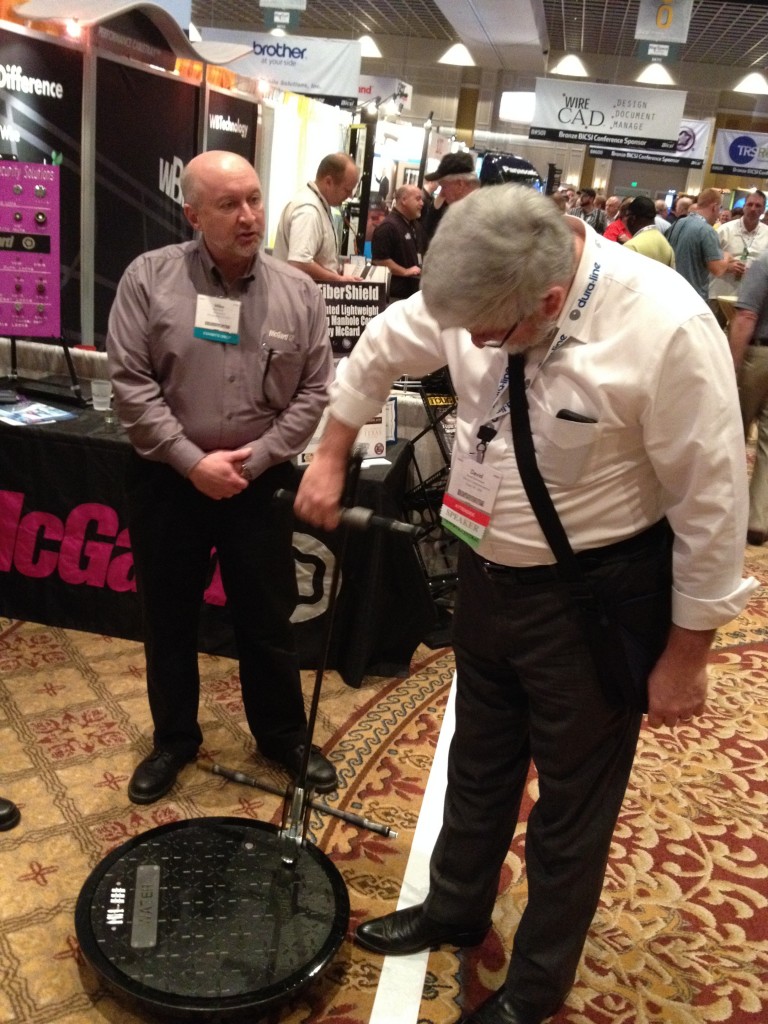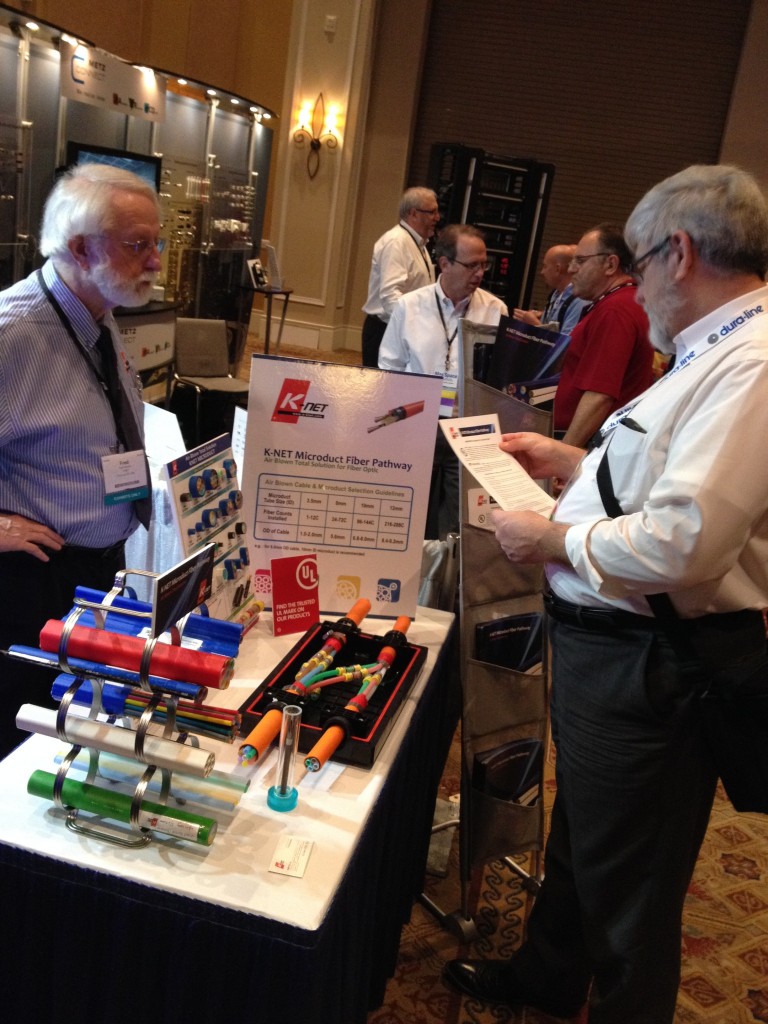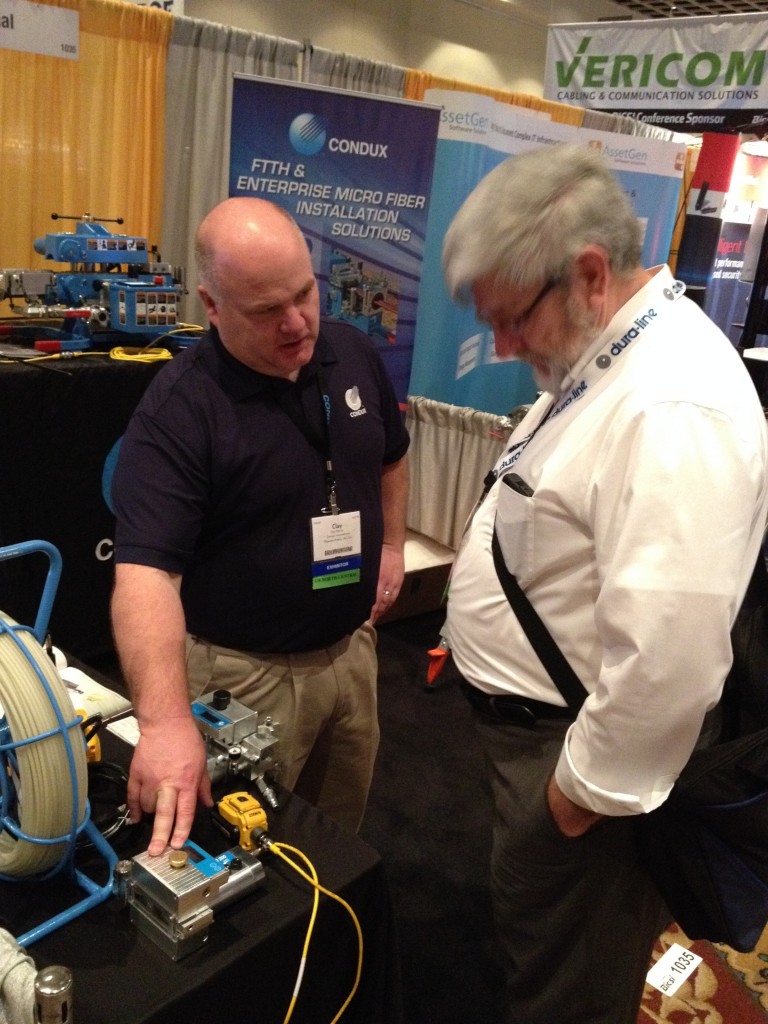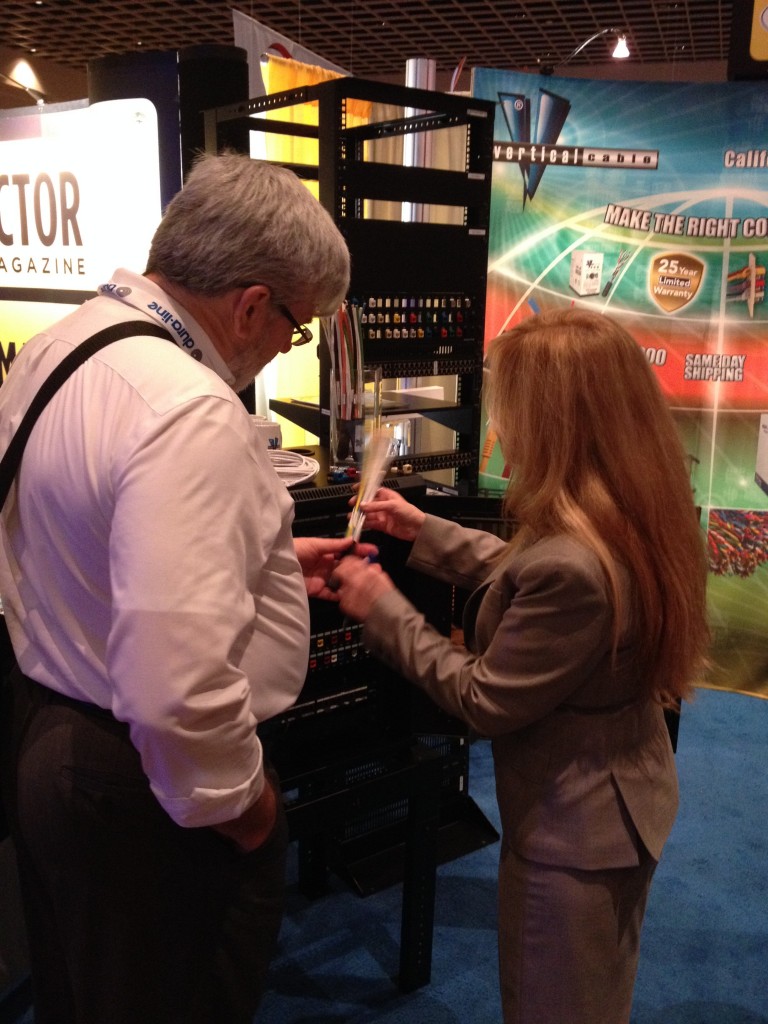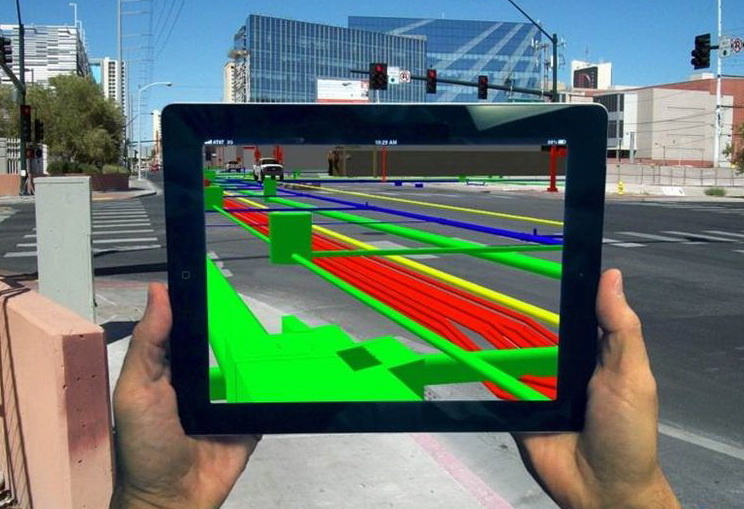
Introduction
In today’s outside plant (“OSP”) environment, the tendency to ‘underground’ the infrastructure has been growing, especially within metropolitan areas but also in areas with severe weather conditions. This trend has created an environment where both safety and aesthetic is addressed but has created a series of new challenges.
Previously, public utilities, such as natural gas – water – storm drain – sewage infrastructure was placed underground, while electric and telecommunications infrastructure was placed aerially. However, this creates a less than aesthetically pleasing environment as well, in severe weather conditions, increases the probability of disruption and/or extended outages. With these aspects in consideration, placement of the electric and telecommunications infrastructure has been trending toward being ‘undergrounded’.
This migration to underground all utilities has created a situation where the underground pathways have become highly congested which creates a serious problem for the placement of the newer OSP infrastructure, whether that is public utilities or telecommunications infrastructure.
Another aspect, that creates a major challenge to the ability to place new OSP infrastructure underground, is that, in many circumstances, the previous underground infrastructure was poorly – if at all – documented, thus making placement of new subsurface infrastructure extremely challenging as well as dangerous. This is a common problem whether working in ‘developed’ or ‘developing’ countries.
Effectively, without knowing what is below the surface at time of engineering, this leaves the as-built to be the definitive document of what is below ground. However, frequently, underground utility lines are put in the ground not according to design but wherever it is easiest and cheapest to build them. As-builts of underground infrastructure are often ‘as-designed’ not ‘as-constructed’ thus are unreliable from the very beginning. And if the ‘as-builts’ are provided, very few are geolocated to a mapping grade level and almost never reflect depth or crossings of other utilities. Why is this an issue? In the US alone:
- Underground utility line hit every 60 seconds
- Annual cost due to utility damage ranges in the Billions of US dollar
- Inaccurate records and locating
- Utilities not marked
- Crowding within the rights-of-way
Additionally, with the current political environment, globally, even should the underground infrastructure be properly documented, many companies are unlikely to share as-built documentation with third parties. In many cases, it is illegal to share underground infrastructure maps due to the threat of terrorist attacks against the infrastructure.
Example: Within the US, the Department of Homeland Security (“DHS”) restricts access and distribution of any natural gas infrastructure. As such, while they maybe well documented, no third party outside of the operating gas company may have access to these files, unless obtaining written approval from DHS.
In many countries, the need to ‘locate’ the subsurface utility infrastructure is mandated by law, whereas, in other countries this is not mandated. Regardless of the law mandates, the need to identify the subsurface infrastructure is critical, especially when using construction techniques such as horizontal directional drilling (‘HDD”). However, even if open trench and or micro-trenching is to be used as the construction technique, prior knowledge of where the existing subsurface infrastructure is critical.
Even with ‘locates’, with the use of direct-buried fiber optic cables, HDPE conduits, and clay tiles, these are non-conductive, as such if the ‘tracer wire’ is improperly, if at all, installed, then these utilities become ‘unlocatable’ as such significantly increases the cost to build and restore, let alone the increased risk factor.
Subsurface Utility Engineering
Subsurface utility engineering (“SUE”) is a highly efficient, nondestructive engineering practice that combines geophysics, surveying, civil engineering, and asset management technologies. Used appropriately and performed correctly, SUE identifies existing subsurface utility data, maps the locations of underground utilities, and classifies the accuracy of the data based on standardized quality levels. The data allows for developing strategies and making informed design decisions to manage risks and avoid utility conflicts and delays. If a utility conflict arises, viable alternatives can be found to resolve the issue before any damage is done and usually at a lower cost.
In 2003, the American Society of Civil Engineers (“ASCE”) published the ‘Standard Guideline for the Collection and Depiction of Existing Subsurface Utility Data.” This standard formally defines SUE and sets standard guidance for collecting and depicting underground utility information.
According to the American Society of Civil Engineers (ASCE), the definition of subsurface utility engineering is:
“A branch of engineering practice that manages certain risks associated with subsurface utilities via: utility mapping at appropriate quality levels, utility coordination, utility relocation design and coordination, utility assessment, communication of utility data to concerned parties, utility relocation cost estimates, implementation of utility accommodation policies and utility design.”
Economics of SUE
According to a US Department of Transportation (USDOT) sponsored survey conducted by Purdue University in 1999[1], two broad categories of savings emerged from using SUE – quantifiable and qualitative savings. The Purdue study quantified a total of USD4.62 in avoided costs for every USD1.00 spent on SUE. Although qualitative savings were not directly measurable, the researchers believed those savings were significant, and arguably many times more valuable than the quantifiable savings.
According to a 2004 study, commissioned by Ontario Sewer and Watermain Contractors Association and conducted by the University of Toronto to study the impact of SUE on large infrastructure projects in Ontario, determined that USD3.41 can be avoided for every USD1.00 spent on SUE.
In 2007, the Pennsylvania Department of Transportation (PennDOT) commissioned Pennsylvania State University (Penn State) to study savings on Pennsylvania highway projects that used SUE in accordance with the mapping provisions of the American standards. In their unpublished report, Subsurface Engineering Manual, Penn State found a return on investment of USD21.00 saved for every USD1.00 spent on SUE.[2]
In 2010, the University of Toronto accomplished an Australian study, over a period of 12-months and took an in-depth look at 9 large municipal and highway reconstruction projects that developed an enhanced depiction of buried utilities. Based on this analysis, a cost model was developed that considers both tangible and intangible benefits. All projects showed a positive return on investment (ROI) that ranged from USD2.05 to USD6.59 for every USD1.00 spent on improving utility location data.
In 2015, a pilot project was conducted in Milan Italy of approximately 230,000 square meters, to documents all underground infrastructure including electric power, water, sewers, gas, district heating, street lighting, and telecommunications via historical records and using ground penetrating radar (GPR).[3] Comparison of the historical records with the results captured by GPR revealed significant discrepancies in the historical record including thousands of meters of unknown infrastructure. For the ‘known’ infrastructure the average error in geolocation was about 30% but much larger errors of up to 100% were also recorded. The conclusion is that even in Europe the record of underground infrastructure can be highly unreliable. The economic analysis of the data reflected that an estimated ROI of about €16.00 (USD17.8784) for every €1.00 (USD1.1174) invested in improving the information reliability of the underground infrastructure.
Subsurface Utility Locating Techniques
In general, there are two methods used within the industry to identify the subsurface infrastructure. These are:
- Intrusive Technique: This method requires the actual physical exposure of the subsurface infrastructure.
- Daylighting (aka Potholing): Medium Risk, as normally has been ‘located’, to damage and potentially bodily harm, accomplished via mechanized and or hand digging. Potholing is the process of physically exposing the cross section of the utility that shall be crossed. This method is used for any new infrastructure running parallel existing infrastructure.
- Open trench without locating: High Risk to damage and potential bodily harm, normally accomplished by hand digging
- Open trench with non-intrusive locating: Medium risk as markings are unlikely to be 100% correctly placed[4]
- Non-Intrusive Technique: This method uses acoustical and or radio wave propagation to locate subsurface infrastructure without having to physically expose the infrastructure prior to start of construction.
- Existing Underground Conduit – Rodding with sonde head: Medium risk as any damaged cable plant could be further damaged and or if electrical, electricity could flow back within the rod to the operator. Dependent upon having access to existing conduit infrastructure.
- GPS Data Collectors: Low risk during collection however High Risk for construction. This is the process of using GPS Data Collectors to collect terrestrial visible utility points along the proposed construction line. (Such as: vaults, handholes, valve points, transformers, etc.) This method would require highly skilled surveyors who are familiar with utility corridors and what to look for.
- Radio-Detection Locating: Medium risk due to the nature of soil mechanics and radio wave propagation resulting in markings not correctly placed; dependent upon having access to at least one end of a metallic pathway following the conduit pathway. Should be noted that in the absence of a metallic pathway along the route (tracer wire if direct buried non-armor fiber optic cable, HDPE conduits, or clay tiles). Without the metallic carrier, the locate moves from ‘medium risk’ to ‘high risk’.
- Acoustic Pipe Locating: Medium risk due to the nature of soil mechanics and radio wave propagation resulting in markings not correctly placed. Independent of access to metallic pathway, able to identify plastic (HDPE), metallic, concrete, Cast iron, ductile and clay tile pipes.
- Ground Penetrating Radar: Low-to-Medium risk due to the nature of soil mechanics and radio wave propagation, while still facing the impediments of soil mechanics, GPR is more accurate if 3D post-processing software is used and a proper grid pattern for capture. While this represents the latest in technology, it also requires the greatest skill set to operate if attempting to map the subsurface infrastructure, albeit, overall the cost factor is normally justified and able to be proven to be the most reliable.
SUE Process
The three major activities of designating, locating and managing data can be conducted individually to meet the specific needs of a given project, but they are most advantageously employed in combination to create a complete three-dimensional mapping of a utility system. While the practice of SUE is tailored to each project, the process typically follows the following course and ASCE Quality Levels:
Quality Level D (“QL-D”)
The SUE provider gathers utility records from all available sources. These may include as-built drawings, field notes, distribution maps and, even, recollections from people who were involved in the planning, building or maintenance of the utilities in question. All the data is then compiled into a composite drawing and labeled ASCE Quality Level D.
Quality Level C (“QL-C”)
A site visit is made to find visible surface features of the existing underground utilities (e.g., manholes, pedestals, valves, etc.). This site visit may be conducted while the topographic survey is completed for the project. This information is added to the composite drawing completed during the ASCE Quality Level D record research and upgraded to ASCE Quality Level C.
Quality Level B (“QL-B”)
At this point, the project team can make an informed decision as to which utilities may have an impact on the proposed design and determine which areas may warrant further investigation. Using a variety of geophysical techniques (e.g., pipe and cable locators, or ground penetrating radar), the horizontal position of these critical utilities is determined. This information is compiled into the utility drawing, now labeled as ASCE Quality Level B data.
Conflict Matrix
The Quality Level B data is then referenced with the proposed design to identify utility conflict (existing utilities crossing the path of the proposed design), and the subsurface utility engineer creates a conflict matrix. The conflict matrix identifies conflicts and allows the designers to make educated decisions regarding relocation or redesign. It is important to use the cross-sections, drainage profiles and staging plans, in addition to the basic plan views. Many times, significant conflicts will appear on these sheets, even though they were not apparent on the plan sheet.
Quality Level A (“QL-A”)
Once conflicts are identified using the conflict matrix, the final step in the data collection process is to excavate test holes at key locations where the exact size, material type, depth and orientation of the utilities are identified. The test hole information is surveyed and included in the utility drawings, which are now ASCE Quality Level A.
Utility Corridors
With the growth of underground placement of utilities infrastructures, most communities have designated certain pathways or corridors where the utilities can be placed. These corridors are under the authority of local municipalities and can be designated anywhere that is designated as public rights-of-way (“RoW”).
The intent of the utility corridor is to allow for management of the public RoW to allow for the maximum number of utilities, both public and private, to be placed in a controlled manner.
Prior to undergrounding of electric and telecommunications infrastructure, these corridors were not well managed, as most of the utilities placed underground (water, sewer, storm drains) were under the direct authority of the municipality. Natural gas lines were the exception in many cases. However, the normal process was to have the gas companies place the main gas lines on the opposite side of the road to the water mains. Of course, this has not always been maintained, as such cannot be assumed for all subsurface build programs.
Another aspect that has occurred with the undergrounding of all utilities is the use of the ‘common trench’ which is good at the initial time of placement. However future additions to the infrastructure or new infrastructure requirements, the common trench is detrimental. The precept of a common trench is separation of utilities is maintained using step trenches that allows for varying depths allowing for vertical separations and then width for horizontal separations. Based on these precepts and any other available documentation, SUE QL-D can be developed as a starting point.
The idea of municipality issued permits for placement of the infrastructures underground is viewed as an intent to allow for better documentation control of the subsurface area and forcing of documentation. While in principle this a good idea, it is only as good as the as-built documentation.
Of course, the flaw in the corridor and permitting process is the dependency on proper documentation of as built conditions. Due to the nature of many of the technologies being placed today, i.e. fiber infrastructure, severe 90-degree bends is not practical, as such the needed ’22.5 degree sweeps’ to provide service to the structure is often not properly documented. Even if this is a known aspect, the dominant as-built records will not show the starting point of the sweep, as such creating an unknown obstacle in the potential build path.
Additionally, in the normal process of public utilities, documentation will be gathered of the ‘mains’ but laterals that service the individual structures are not well documented, if at all.
It should also be noted that in certain countries the use of the rights-of-way are billable to the associated utility, thus the quality and accuracy of the documentation is critical. Failure to have detailed and accurate records could result in either over- or under-charging utilities by the respective government authority.
Soil Mechanics
Regardless of the techniques used to identify the subsurface infrastructures, soil mechanics will have a direct effect on the level of accuracy of the information. The level of accuracy of any of these techniques is directly related to the Soil Electromagnetic properties.
The electromagnetic properties of a soil include its magnetic permeability, direct current (DC) electrical conductivity, and dielectric permittivity. Since most soils are nonferromagnetic, soil electromagnetic properties usually, only refer to their DC electrical conductivity and dielectric permittivity.
Soil is composed of solids, liquids, and gases. The solid phase may be minerals, organic matter, or both. The spaces between the solids (soil particles) are called voids. Water is often the predominant liquid and air is the predominant gas. The soil water is called porewater and plays a very important role in the behavior of soils under load. If all the voids are filled by water, the soil is saturated. Otherwise, the soil is unsaturated. If all the voids are filled with air, the soil is said to be dry.
The soil composition has a direct effective on the tools effectiveness, whether radio detection, acoustical, and or GPR. The radio frequency selected is directly affected by the soil composition. As such, the selection of the right tool and or tools will be dictated by the understanding of the soil composition in the area.
In consideration of this aspect, the approved utility corridor becomes even more critical, as the soil composition within a roadbed is more predictable than the soil behind the street curb, which may or may not be disturbed and or compacted soil.
The type of subsurface infrastructure shall also have a direct effect on soil formation. Dependent upon the type of materials (i.e. HDPE, PVC, Clay Tile, Cast Iron, etc.) and utility (i.e. water, electric, gas, fiber optic, sewer, etc.) will have a direct effect on how the soil forms around the subsurface structure. This soil formation can be used to identify the type of infrastructure when using the ground penetrating radar, but is not identifiable with radio and or acoustic detection methods. This is key to understanding the true nature of the subsurface utilities, as many times the older infrastructure elements have been abandoned-in-place, which would change the method used to construct around them.
Rodding Existing Conduit
When existing subsurface infrastructure is known and it consists of installed accessible conduits, the use of a rodder with a sonde head can be used. This process requires the use of a radio-detection locator as well that can receive the frequency generated by the sonde head.
This is the most accurate of locating methods, as it is physically within the conduit pathway. However, the soil characteristics will have an impact on the exact positioning of the conduit. Additionally, this is a passive system, in that it has no data collection mechanism, as such, will require additional steps to allow for creation of a permanent record of the subsurface infrastructure.
For the creation of documentation to allow for a permanent subsurface infrastructure record will require that the use of a locator wand that is linked (i.e. Bluetooth) to or have an integrated GPS data collector and have a storage capacity for the information.
This is a very time consuming method as it requires accessing each handhole and or manhole and then pushing the rod through the conduit. As such, this is a minimum of a two-to-three-person process. Additionally, if the conduit pathway is in the roadway, traffic control will have to be accomplished as well.
One of the major benefits of this system, is not only is the subsurface route being verified, but also the conduit that the rod and sonde is in, is being ‘verified’ as being unblocked for use for placement of any new infrastructure.
Global Positioning System Locating
Global Positioning System (“GPS”) locating is the process where field survey is accomplished with a GPS data collector and collection of subsurface utilities as can be visually seen at the surface level. This process allows for an ASCE QL-C level documentation, but is highly subjective and should not be viewed as adequate for start of construction, if mitigation of potential subsurface utility hits is desirable. Albeit this level of information gathering along with a solid understanding of the utility corridors and any utility maps able to acquire, will suffice in most permitting documentation needs.
This can be very field labor intensive if having field survey teams collect the information manually in the field. On average, this will consist of a two-person field survey team, each with a data collector.
Other and more cost-effective manner would be to use LiDAR (“Light Detection and Ranging”) systems and then having GIS data extraction analyst mark the LiDAR files and importing into the GIS mapping system. The level of accuracy of the LiDAR system (dependent upon actual system) is ±5.08-centimeters (2-inches) at 10-meters (33-feet).
Key to either method is the skill set (or training) field surveyor or the data extractor to identify and collect/mark the utility element of interest.
Radio Detection Locating
Radio Detection locating is the most common process used within the countries that mandates ‘locates’. This is the process where two separate but dependent units exist. The first is the transmitter unit and the second is the locating wand (or receiver).
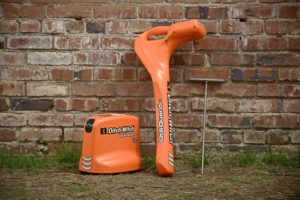
In certain circumstances, power cables can be located without the use of the transmitter. In this situation, the receiver is receiving the electromagnetic field readings that are emanated from the power cable. It should be understood though that based on depth, power output and soil characteristics, this might not be possible.
The key requirement for this type of system is to have a metallic pathway either to follow the electrical current or to provide a path for the generated radio frequency, which is detected by the receiver. The lack of an attachable metallic pathway makes this system ineffective.
The use of the transmitter and receiver is the most reliable method to use for locating subsurface infrastructure, whether direct buried or within a conduit system. However, this is dependent upon being able to access a point where the utility is accessible either at the side of the structure, in the handhole/manhole, or at a tracer point (if applicable).
While this method is the most common, it is by far from the most accurate. The principle of this system is to emanate the radio signal from the cable and to project that signal outward at a 360-degree pattern. Due to soil characteristics, this weakens the signal as well as disperses the signal. The level of signal dispersion is dependent upon the soil voids and soil type.
Because of this dispersion factor, most countries that mandates ‘locating’ allows for a 60-centimeter (24-inches) either side of the probable center point of the respective cable pathway. This level of inaccuracy creates a potential cost during construction where daylighting (aka potholing) of the utility could result in a 1.22-meter (4-foot) point to expose the utility.
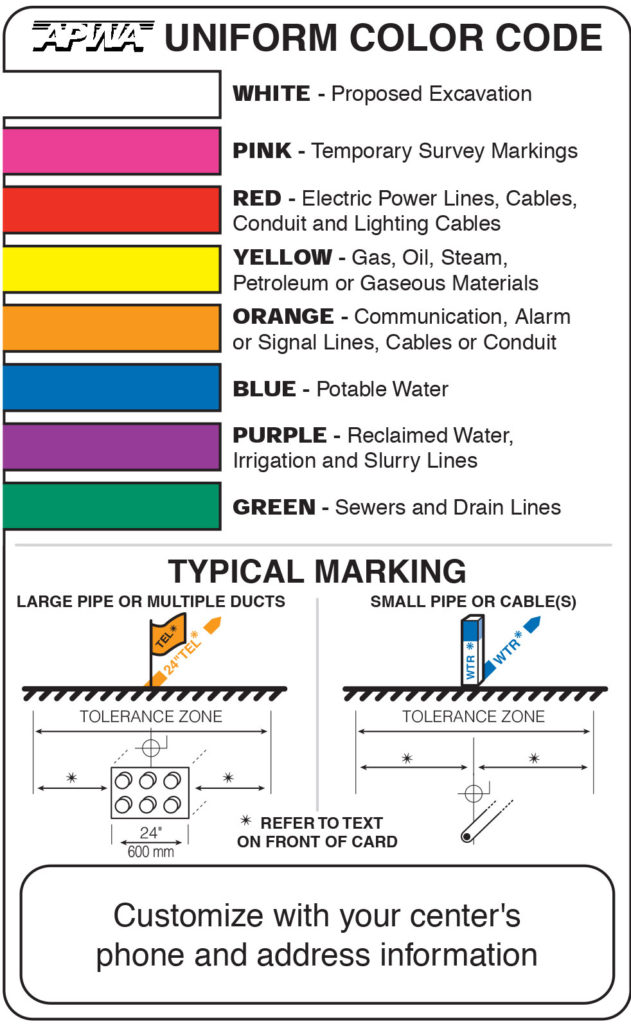
This is a single man process but is also utility specific. What this means is that only one utility can be ‘located’ at one-time. Due to the number of subsurface utilities present in the average area, this creates a time-consuming process of having to repeatedly go over the same area numerous times. The effect of this is the delay in SUE or construction until the same footage has been completed ‘located’. It should also be noted, in most countries that requires locates, the locating entity will not mark the depth of the identified utility, even though it is shown on the receiver element, however due to liability issues, most regulators have waived the need to show depth. Due to this factor, daylighting (aka potholing) is still mandatory for construction to expose the subsurface utility.
Where regulatory mandates are in place for locating, the American Public Works Association (“APWA”) has established a standard uniform color code for marking different utilities. It should be noted that dependent upon the country where the work is to be performed, different color codes maybe used.
Example: In Australia, the following is used: Orange = electricity; Yellow = gas; Blue = water; White = communications; Red = fire services; Cream = sewage; Purple = reclaimed water; Silver/gray = steam; Brown = oils, flammable liquids; Light Blue = air; Pink = unidentified services; and, Black = other liquids.
As with the rod and sonde process, this is designed as a passive system, in that by itself it does not automate the collection of the subsurface infrastructure. Rather it is a terrestrial identification system that when tied to paint markings, is visible at the site but has no post-processing supported documentation.
To provide the information for either construction prints or for SUE documentation of existing infrastructure, this passive system must be augmented with GPS data collectors and a storage medium.
One other use of this system is to verify the as-built condition of any new infrastructure, if a metallic pathway (i.e. tracer wire) is placed. In this manner, the “QA Inspector” can verify the probable true running line and depth of the newly placed subsurface infrastructure. When the receiver element is linked to a GPS Data collector, automation of the as-built records can be achieved when using a GPS oriented GIS as-built system.
Acoustic Pipe Locating
Acoustic locating is designed to allow for locating of subsurface infrastructure without the transmitter element. The basic principle is to use sound waves from the surface and to have them reflect back up as they hit solid subsurface elements. While this creates the ability to ‘locate’ all elements of the underground regardless of a metallic element to attach the transmitter element to, it does not allow for recognition of what type of utility it is.
Use of an acoustic pipe locator is an extremely slow process and should only be used in very small areas, as effectively you must ‘measure’ every 15-to-30 centimeters (6-12 inches) along the whole path you are attempting to locate. Additionally, you will have to do this in a grid pattern to ensure you capture more than the ±7.62-to-15.24 centimeters (3-to-6 inches) that is directly below the acoustic locator.
Acoustic locators do not interface with GPS data collectors. As such, if mapping of the subsurface infrastructure is desired, additional equipment and steps will have to be taken to document the subsurface infrastructure. This additional equipment will consist of mapping grade level GPS data collector and an external tablet with stylus capabilities interfaced with the GPS data collector and having land base map of the area documenting.
Ground Penetrating Radar
GPR is an electromagnetic (EM) geophysical method for high-resolution detection, imaging and mapping of subsurface soils and rock conditions. The idea of using the propagation of high-frequency EM waves for subsurface investigations can be traced back to the beginning of the century, but the earliest references to the possibility of using sharp EM pulses appear in German patents from the 1920’s.
Ground penetrating radar (GPR) performance is primarily governed by the material being surveyed as radio waves decrease exponentially and soon become undetectable in energy absorbing materials such as wet clay.
This is a physical limit and no amount of instrumentation upgrading will overcome it. However, development efforts aimed at improving the over-all sensitivity of the system may enhance performance in several circumstances and allow even better results.[5]
The choice of using a GPR system should be understood that it will require trained surveyors and a GIS post processing team. Failure to understand this will result in the system being worthless. However, the right level of investment and skilled post processing staff, the information will prove to be invaluable in reducing cost. It should also be understood the use of GPR is truly the only manner, in which, SUE can be truly accomplished, thus the recognized cost savings is dependent upon the use of GPR.
GPR Explained
A typical GPR system has three main components: Transmitter and receiver that are directly connected to an antenna, and a control unit (timing). The transmitting antenna radiates a short high-frequency EM pulse into the ground, where it is refracted, diffracted, and reflected primarily as it encounters changes in dielectric permittivity and electric conductivity.
The propagation of a radar signal depends mainly on the electrical properties of the subsurface materials. Waves that are scattered back toward the earth’s surface induce a signal in the receiving antenna, and are recorded as digitized signals for display and further analysis.

GPR works by sending a tiny pulse of energy into a material and recording the strength and the time required for the return of any reflected signal. A series of pulses over a single area make up what is called a scan. Reflections are produced whenever the energy pulse enters into a material with different electrical conduction properties or dielectric permittivity from the material it left. The strength, or amplitude, of the reflection is determined by the contrast in the dielectric constants and conductivities of the two materials. This means that a pulse which moves from dry sand (dielectric of 5) to wet sand (dielectric of 30) will produce a very strong reflection, while moving from dry sand (5) to limestone (7) will produce a relatively weak reflection.
While some of the GPR energy pulse is reflected back to the antenna, energy also keeps traveling through the material until it either dissipates (attenuates) or the GPR control unit has closed its time window. The rate of signal attenuation varies widely and is dependent on the properties of the material through which the pulse is passing.
Materials with a high dielectric will slow the radar wave and it will not be able to penetrate as far. Materials with high conductivity will attenuate the signal rapidly. Water saturation dramatically raises the dielectric of a material, so a survey area should be carefully inspected for signs of water penetration.
Metals are considered to be a complete reflector and do not allow any amount of signal to pass through. Materials beneath a metal sheet, fine metal mesh, or pan decking will not be visible.
Radar energy is not emitted from the antenna in a straight line. It is emitted in a cone shape. The two-way travel time for energy at the leading edge of the cone is longer than for energy directly beneath the antenna. This is because that leading edge of the cone represents the hypotenuse of a right triangle.

Because it takes longer for that energy to be received, it is recorded farther down in the profile. As the antenna is moved over a target, the distance between them decreases until the antenna is over the target and increases as the antenna is moved away. It is for this reason that a single target will appear in a data as a hyperbola, or inverted “U.” The target is actually at the peak amplitude of the positive wavelet.
Data are collected in parallel transects and then placed together in their appropriate locations for computer processing in a specialized software program such as GSSI’s RADAN. The computer then produces a horizontal surface at a particular depth in the record. This is referred to as a depth slice, which allows operators to interpret a plan view of the survey area.
In many situations, a GPR operator will simply note the location of a target so that it can be avoided, effective like a radio detection locator. In these instances, it is only necessary to use a simple linescan format to mark the approximate area of the target on the survey surface. When desiring a detailed subsurface maps and depth to features (i.e. SUE) will require the use of GPR post-processing software, which applies mathematical functions to the data to remove background interference, migrate hyperbolas, calculate accurate depth and much more.
Conclusion
From a purely economic point of view, the use of SUE does show a solid ROI, USD3-USD21 savings for every USD1 spent on SUE. Of course, that is one of the challenges, because that is money saved and the convincing of the companies and communities this is difficult at best. However, those communities that have adopted SUE as part of their mandatory roads and utilities construction projects are benefiting from these savings.
Of course, the question is what is the best technique to use for Engineering? After all, this is before construction! So, the answer is all the above, because each has their strengths and weaknesses. Use of the GPR shall provide greater level of detail, depth, size, etc. however it cannot penetrate all soils plus depending upon soil types it has a depth issue. However, GPRs does not depend upon any metallic element thus able to find the clay tile and more recently the HDPE piping commonly being used in telecommunications, water, sewer, and electric utilities.
As reflected in the Milan project, the use of historical records is inaccurate thus the use of SUE is critical.
Of course, the common thought is to use construction locates via radio detecting locators, however, this has proven to be only partially reliable, considering the number of utility strikes that occur. However, with utility strikes occurring on average every 60-seconds in the US, the current techniques have been proven numerous times to be faulty. The addition of subsurface utility engineering at the ENGINEERING phase is needed. The ROI has been shown over a 18 year period, and they only improve not level out, so the time is now for implementation of SUE as part of the design process. The use of the proper survey tools and post-processing software & analysts is critical to make the SUE process valid.
So, what company is willing to stand up to this ‘Call to Action’ and begin doing the right thing and reducing its costs – both direct and indirect costs?
References
- Subsurface Utility Engineering in Ontario: Challenges & Opportunities, A report to the Ontario Sewer and Watermain Contractors Association, 2005, Osman H & El-Diraby TE
- Utilization of Subsurface Engineering to improve the effectiveness of Utility Relocation and Coordination efforts on Highway Projects in Ontario, September 20, 2006, Arcand L & Osman H
- Right of Way and Utilities Guidelines and Best Practices, AAHSTO, January 6, 2004
- A guide for Accommodating Utilities within Highway Right-of-Way, AAHSTO, ISBN 1-56051-306-3
- Standard Guideline for the Collection and Depiction of Existing Subsurface Utility Data, ASCE 2002
- Integrating Subsurface Utility Engineering into Damage Prevention Programs, 1994, Anaspach JH
- Developing Best Practices for Avoiding Utility Relocation Delays, ASCE 2005, Ellis JR, RD & Lee S
- Subsurface Utility Engineering, March 8, 2002, US Federal Highway Administration
- Cost Savings on Highway Projects utilizing Subsurface Utility Engineering, 2000, US Federal Highway Administration, Lew JJ
- ROI of up to $21 per dollar invested in improving accuracy of geolocation of underground utilities, June 6, 2003, Zeiss, G
- Explanation of the use of 3D GPR for SUE: https://www.youtube.com/watch?v=5ZRBU5wsVdc
- GPR Introduction from GSSI: https://www.youtube.com/watch?v=oQaRfA7yJ0g
- Economic Development in New Zealand: GPR use in SUE: https://www.youtube.com/watch?v=COVY_2g-0Go
- Ingegneria Dei Sistemi Opera Duo GPR: https://www.youtube.com/watch?v=-b0Wr5eATDk
- Soil Mechanics and Foundations, Third Edition, Muni Budhu, ISBN 978-0-470-55684-9, 2011
[1] Https://www.fhwa.dot.gov/programadmin/pus.cfm
[2] This significant higher return on investment when compared to the Purdue and Toronto studies is thought to be a result of maturation of process and possibly a consideration of the qualitative savings.
[3] GPR seems to work better in the EU because the transmitter power is not as restricted as in the US
[4] Unlikely as improperly marked locates is one of the major causes of utility hits, but not the only, as many times due to Contractor negligence utilities are hit. By the way, these are the same Contractors you are counting on providing quality ‘As Built’ records.
[5] A European funded R&D project is underway called Optimized Radar to Find Every Utility in the Street (ORFEUS), to which PG&E (California gas and electric operator)














